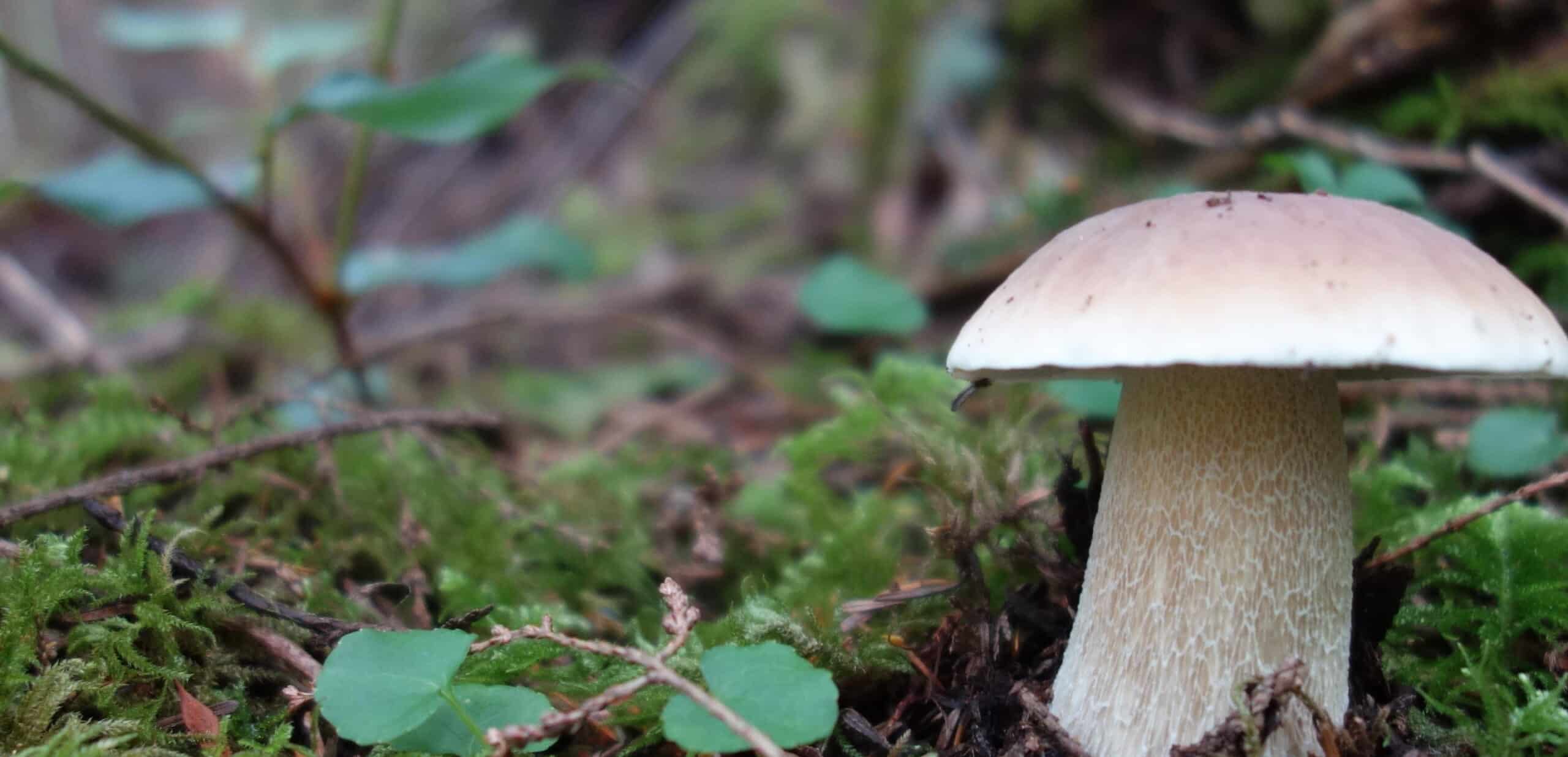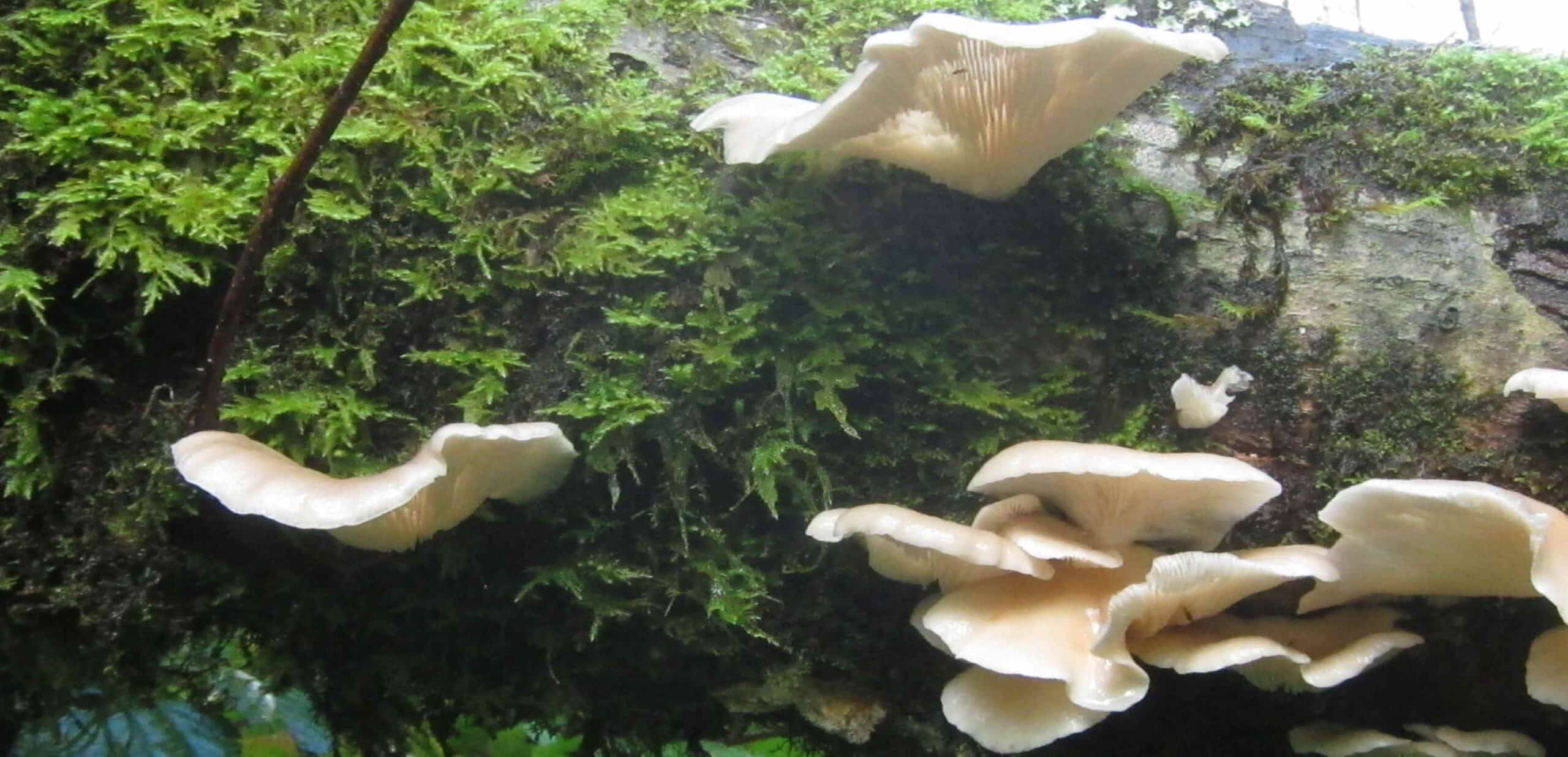It has been a banner year for wild mushrooms in the woods of the pacific northwest, triggered by a mild and moist summer. Mushrooms are one of many valuable non-timber forest products being explored by EFM for our foraged forest foods line and are well known for their medicinal properties, culinary value and ecological benefits.
Edible mushrooms include those which grow through both ectomycorrhizal and saprophytic strategies, with each strategy improving forest health in a different way. Ectomycorrhizal fungi obtain carbon from trees and improve plant mineral nutrient uptake with their widespread hyphal network. Well-loved examples of ectomycorrhizal fungi include chanterelles and boletes.
Saprophytic mushrooms perform a different but also very important ecological function: helping break down dead and decaying organic matter into simple substances that can be taken up and recycled by plants. Popular wild foraged saprophytes include morels and oyster mushrooms.
Mushrooms are being increasingly recognized not only for their ecological significance but also for their nutritional value. All types of edible mushrooms contain varying degrees of protein and fiber. They also contain B vitamins as well as a powerful antioxidant called selenium, which helps to support the immune system and prevent damage to cells and tissues.


